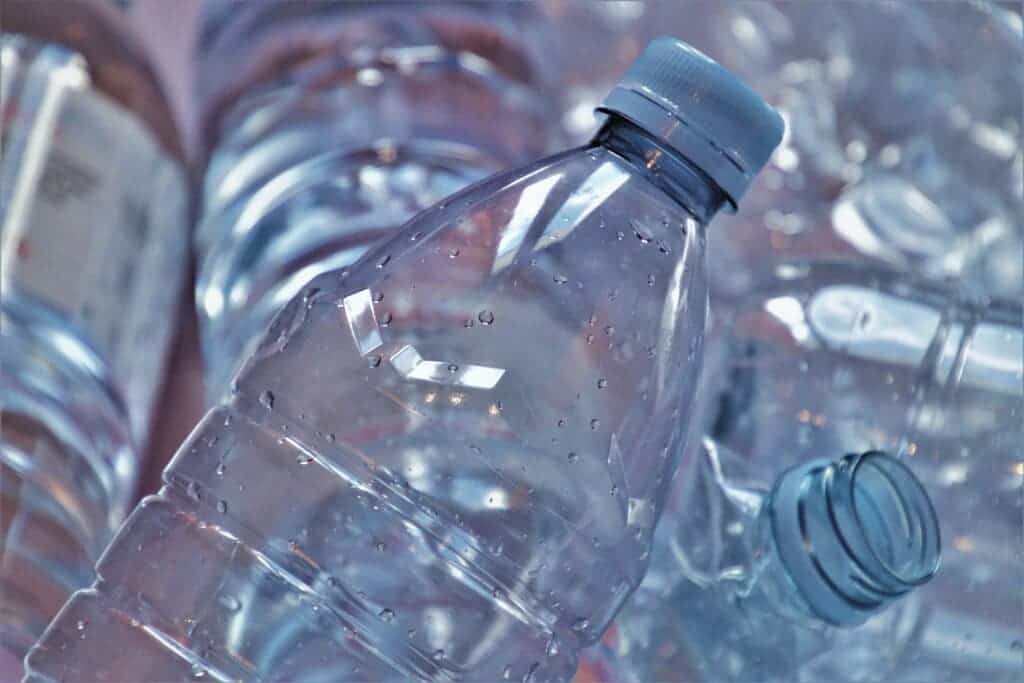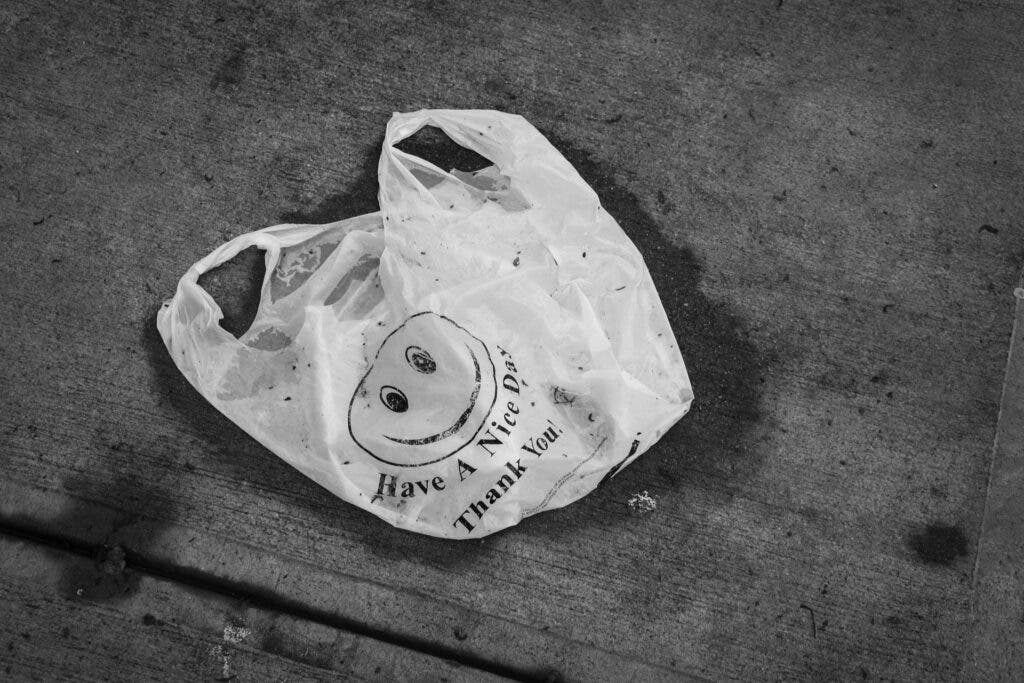Plastic was (and still is) a wonder material. It’s revolutionized how we transport and store things, changing our lives in ways few materials have. But in recent years, it’s become an environmental scourge. So how was plastic invented, and how has it become so impactful in just around a century?

The amount of plastic film manufactured every year across the globe is enough to cover the UK — twice. The number of other plastic-made products such as bags, utensils, bottles, etc that come into circulation each year weighs more than 380 billion tons.
From our smartphone’s fancy back cover to the flooring in space rockets, there are billions of things that now seem impossible to imagine without plastic. Meanwhile, annually, millions of birds and marine animals succumb to death because of the plastic waste dumped in the oceans. Now you might be thinking that plastic is so detrimental that it should be immediately banned but the truth is plastic is not the problem — it’s how we use and discard it.
Plastic wasn’t created by some supervillain who wanted to destroy the earth, it is a man-made product that was invented to make our lives more comfortable and also to reduce the harmful impact of human actions on the environment. Here is the story of how plastic came into existence.
The origin story of plastic

Naturally derived materials like gum, rubber, and shellac are believed to be the inspiration behind the invention of man-made synthetic plastics such as PVC or bakelite. Historians suggest that during the 15th century, Mesoamericans used to build religious figures and structures using natural rubber.
However, the first man-made plastic material Parkesine was not known to the public before 1864’s Great London Exposition, an international science fair where English metallurgist Alexander Parkes exhibited Parkesine for the first time (yes, he named it after himself).
Parkesine was originally invented in 1855. It was a transparent, waterproof, and elastic material created using cellulose, nitric acid, and alcohol, and it could be molded into any shape or size via heating — in a sense, Parkesine was the first plastic ever invented.
In 1867, Alexander Parkes’s Parkesine production facility came under the control of his business associate Daniel Spill who introduced an improved version of Parkesine named Xylonite. Plastic production was starting to take off.

From Parkesine to bakelite to “plastic”
The very next year, American inventor John W. Hyatt came up with a new plastic material called celluloid. It was a blend of nitrocellulose and camphor and emerged as a popular replacement for animal-derived materials such as ivory and tortoiseshell.
Celluloid turned out to be a huge commercial success and Hyatt founded his own company, manufacturing piano keys, billiard balls, toys, artificial gemstones, combs, and a wide range of products in bulk using celluloid. By the early 1880s, Hyatt even started using celluloid to create linen-like men’s wear. A couple of years later, camera company Eastman Kodak’s chemist Henry Reichenbach began developing thin films from celluloid that later became a primary material for capturing photos and shooting motion pictures via camera. However, since celluloid camera films were expensive and could easily catch fire, they were replaced by cellulose-acetate films in the 1930s.
Though celluloid was very popular, the word “plastic” still didn’t exist by the 1900s. Belgian scientist Leo Hendrick Baekeland used the word “plastics” for the first time in 1907 when he came up with the first 100% synthetic plastic substance called bakelite.
This new, highly stable version was fire-resistant, shockproof, flexible, and could be produced in less time than what was required for manufacturing celluloid and Parkesine therefore, by the 1930s bakelite became a widely-accepted substitute for celluloid in the market. It is currently used in a countless number of things including kitchenware, electrical appliances, clocks, automobiles, etc.

The following years witnessed the birth of polymer science which led to the rise of numerous other plastic materials such as polyethylene, polyvinyl chloride (PVC), polypropylene, etc. In 1959, Swedish engineer Sten Gustaf Thulin invented the most common plastic product: the plastic carry bag. According to his son Raoul Thulin, Sten created plastic bags to replace paper bags which were causing large-scale deforestation at that time. He told BBC in an interview, “To my dad, the idea that people would simply throw these away would be bizarre”.
The introduction of Parkesine is generally regarded as the birth of the plastics industry, but you could also make an argument for Baekeland being the inventor of plastic. Depending on what exactly you consider “plastic”, either Parkes or Baekeland is the inventor — but as it so often happens, it wasn’t one big breakthrough moment, but rather a process of constant invention and development.
Becoming a major environmental problem

Plastic has transformed the way we manufacture, package, transport, and use different products ranging from groceries to cosmetics and vaccines. However, the excessive use of single-use plastic products, less recycling, open dumping of waste, and poor plastic management, has turned an invention that was supposed to act as a solution into a serious problem.
If we either reused or recycled all the plastic that we use, and stopped dropping plastic waste into land and oceans, we could still safely use plastic in environmentally friendly ways. For instance, as compared to paper bags or cloth bags, plastic bags require less energy for production and do not lead to the chopping down of forests, plus they are more durable. Similarly, the use of plastic in automobiles and aircraft reduces their weight and saves fuel, so less carbon emission.
Here’s a disturbing fact: every 60 seconds, approximately one million plastic bottles are bought by people around the globe. That means that every year more than 500 billion plastic bottles are manufactured and sold, which is more than 62 times the current global human population. Here are more concerning facts about plastic:

- A report from UNEP (United Nations Environment Program) suggests that the total plastic on Earth currently weighs 8.3 billion tons and out of this about 5 billion tons of used plastic never got recycled. Since plastic is believed to take hundreds of years (450 years or more) to decompose, this huge mass of waste is likely to release toxins in the oceans and contaminate our soil for many coming centuries.
- The government of Kenya implemented one of the earliest and strictest bans on single-use plastics (including carried bags) in 2017. As per the law, any citizen who is found to be manufacturing, selling, or buying plastic bags in the country would either have to pay a fine of up to $40,000 or could end up in jail for four years.
- A study revealed that plastic has become so abundant in our environment that most of the food we eat now contains microplastic particles. On average, each year a single person consumes 70,000 microplastic particles along with his or her food, these microplastics later lead to problems such as abnormal pregnancy, cancer, endocrine, and stomach-related disorders, cellular damage, etc. Researchers have found microplastic pieces in our blood and even our lungs.
- In 2020, scientists detected the presence of microplastics even in the Arctic, which is one of the most remote locations on Earth. Research conducted in the following year suggests that household laundry or the waste released from textile production units might be the source of microplastic pollution in the Arctic.
- A joint report developed by the World Economic Forum and Ellen MacArthur Foundation highlights that each year eight million tons of plastic (IUCN data suggest 14 tonnes) is dumped into the oceans. At this pace, by 2025, there will be two tonnes of plastic for every six tonnes of fish and by 2050, in terms of weight, the amount of plastic will overtake the total fish in the oceans.
Ultimately, plastic is a tool — and like any tool, it can offer great advantages, but it can also pose problems when used improperly. Plastic was invented more than a hundred years ago and offers important advantages to mankind but in the form of waste, it poses a serious threat to us, the land, the oceans, and the whole biodiversity that fuels life on Earth. Therefore, it is important that we establish an effective plastic management system to prevent this highly useful material from becoming even more of a threat to life on Earth.






